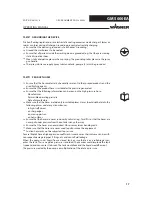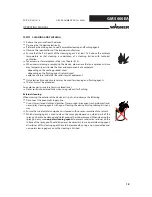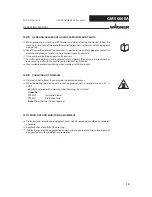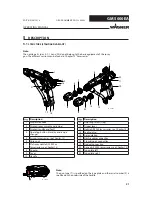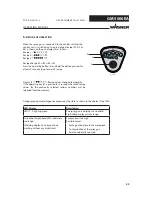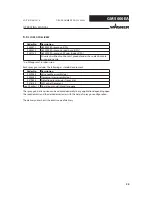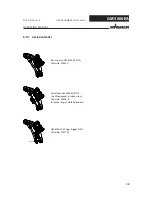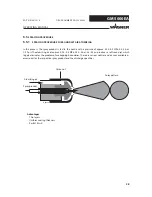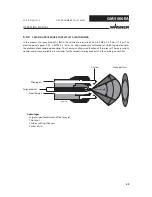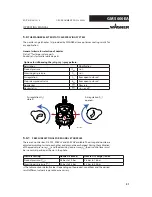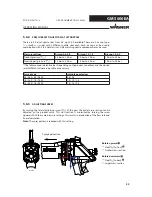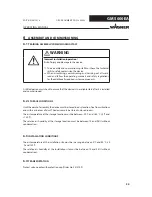
20
GM 5000EA
OPERATING MANUAL
EDITION 04/2016
ORDER NUMBER DOC2344499
4.4
USE IN AREAS SUBJECT TO EXPLOSION HAZARDS
The spray gun may be used in potentially explosive areas. The following safety regulations
must be observed and followed.
4.4.1
SAFETY REGULATIONS
Observe safety instructions in Chapter 3.2.
Ignition temperature of the coating product
Ensure that the ignition temperature of the coating product is above the maximum
surface temperature.
Surface spraying, electrostatics
Never spray device parts using electrostatic equipment (electrostatic spray gun!).
Medium supporting atomizing
To atomize the product, use only weakly oxidizing gases, e.g., air.
Cleaning
If there are deposits on the surfaces, the device may form electrostatic charges. Flames or
sparks can form during discharge.
Remove deposits from the surfaces to maintain conductivity.
Use only a damp cloth to clean the device.
Safe handling of WAGNER spray devices
Mechanical sparks can form if the device comes into contact with metal.
In an explosive atmosphere:
Do not knock or push the device against steel or rusty iron.
Do not drop the spray gun.
Use only tools that are made of a permitted material.
4.5
SAFETY-RELEVANT INFORMATION ABOUT DISCHARGES
The plastic parts of the spray gun are charged electrostatically by the high-voltage fi eld
of the spray gun. Contact with plastic parts harmless discharges (brush discharges) may
occur. They are completely non-hazardous for human health.
When keeping a distance of 4 to 10 mm; 0.15 to 0.4 inch between spray gun and object to
be sprayed, the corona discharge at the end of the electrode is visible in the dark.












